MXA’S YAMAHA YZ134 vs. YZ144 BIG-BORE CHALLENGE
Click on images to enlarge
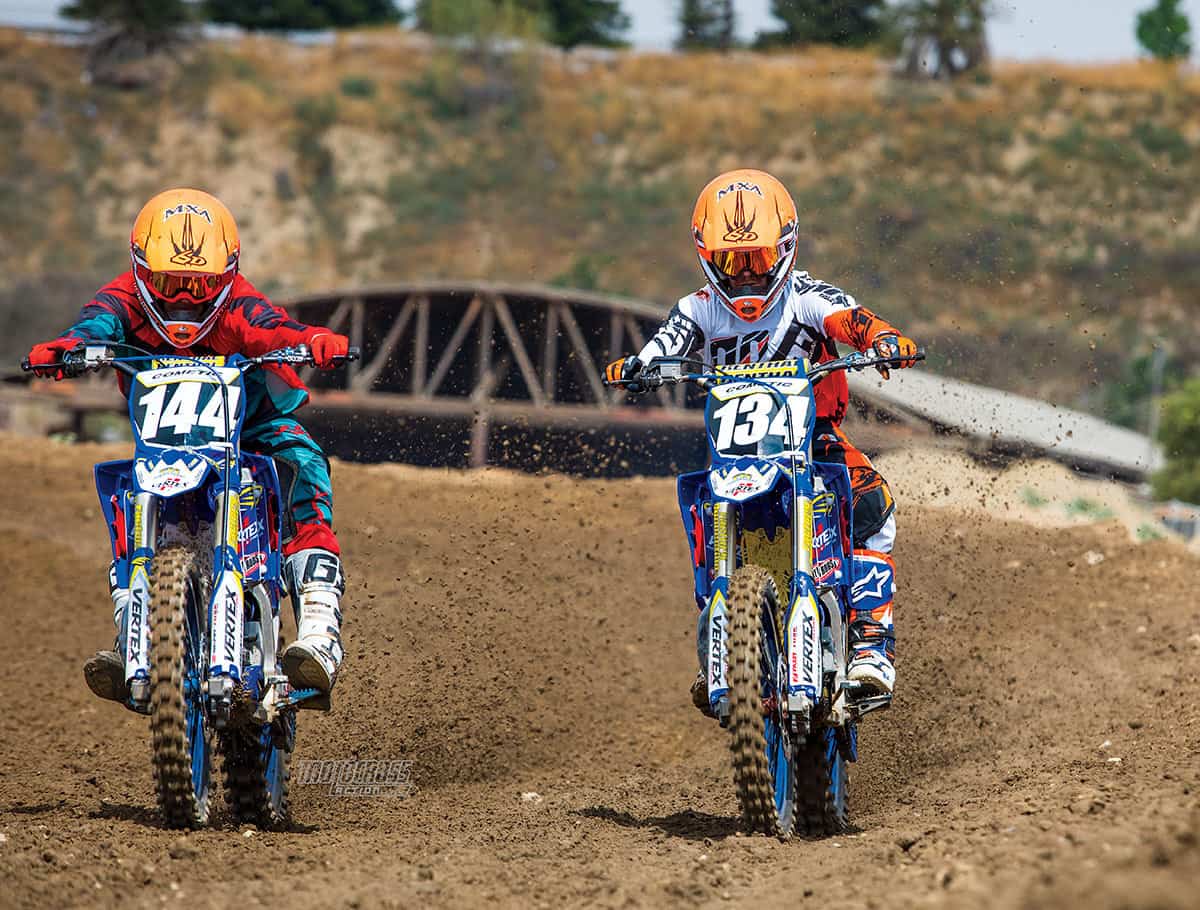
Let’s get this out of the way. The decade-old Yamaha YZ125 has been growing long in the tooth for some time now. The 2017 KTM 125SX is more powerful (3.26 horsepower to be exact), has better brakes, a better clutch and forks that are in the ballpark of Yamaha’s home-run Kayaba SSS components. The question is, can you pony up the dough ($6899) to go orange?
Truth be told, we weren’t big fans of the KTM 125SX prior to its weight loss and AER air forks. The previous suspension was terrible, and every MXA test rider chose to live with the old YZ125 rather than the newer KTM. So, if you are buying a used 125, in our professional opinion, go blue. We did. What you see here are the two used Yamaha YZ125s that we bought for this story—a used 2006 and a used 2011 YZ125. Why did we do that? First, didn’t you read the part above that said, “If you are buying a used 125, in our professional opinion, go blue.” Second, we wanted to find a blue-collared approach to producing orange power. If you already own a 2006 to 2017 Yamaha YZ125, even better. If you’re asking why we bought two YZ125s, the answer should have been obvious from the headline on the first page. We planned to build two big-bore YZ125s—a 134cc and a 144cc. The more displacement, the better, right? Well, maybe not.
The MXA wrecking crew must acknowledge that big-bore 125 machines are not legal to race in most events. So, this comparison test is for professional practice riders, Vet racers, Schoolboy 2 kids, rule benders, trail riders and lovers of two-strokes. The question we wanted to answer is, if you are going to go big, is bigger better?
THE RULES AND REGS OF SETUP
Regardless of the difference in model years, our 2006 and 2011 YZ125s are virtually the same bike; however, to be as fair as possible, we wanted to make both bikes as similar as possible. Our goal was to wipe out any differences so that the only thing we were comparing was cubic centimeters. To that end, we had Factory Connection set up both bikes’ suspension identically. Both bikes had the same Hinson clutch components, Tusk oversize brakes, Faster USA wheels, FMF pipes and silencers, Dunlop MX3S tires, V-Force reed cages, All Balls cables, Applied triple clamps, Uni filters and the engine building expertise of Tom Morgan. Just to be sure that everything was on the up-and-up, the pistons, cylinder work, bottom ends, crank balancing and gaskets were from the same companies on both bikes. As with all MXA test bikes, save for factory Supercross machines, both bikes were tested by Vets, Novices and Pros.
 The Yamaha YZ144 we built has a much stronger hit over the YZ134, but the powerband is shorter and signs off faster.
The Yamaha YZ144 we built has a much stronger hit over the YZ134, but the powerband is shorter and signs off faster.
INNERMOST SECRETS OF THE YAMAHA YZ144
To make the YZ125 into a YZ144, we utilized a used Athena cylinder that was re-plated by Millennium Technologies. Tom Morgan Racing (TMR) was the brains behind both operations. He left the stroke stock and used a bigger piston to achieve the 144cc displacement. Tom also massaged the piston, cylinder and crankcase for some added pony power. TMR has many engine packages to choose from. Click on www.tommorganracing1.com to find out more about what’s available.
On the track, this bike had some serious torque. The powerband was perky off the bottom and had plenty of oomph in the midrange. The top end went flat very fast. It made for a fairly short powerband. Our Pro riders liked the snappiness out of corners but not the flatness on top. It made shift points awkward, and it was hard to get the fluid rhythm that most Pros seek when riding a 125 wide open. The fast test riders couldn’t ride the 144 the way they wanted. Conversely, our Novice and Vet test riders had a vastly different opinion of the power, especially on tighter tracks. These riders don’t carry as much speed into the corners as Pros do. The powerful midrange allowed them to ride the YZ144 without having to hold it wide open. As a bonus, they didn’t have to abuse the clutch or downshift numerous gears to find the meat of the powerband. The slower riders of the group gave this engine two thumbs up.
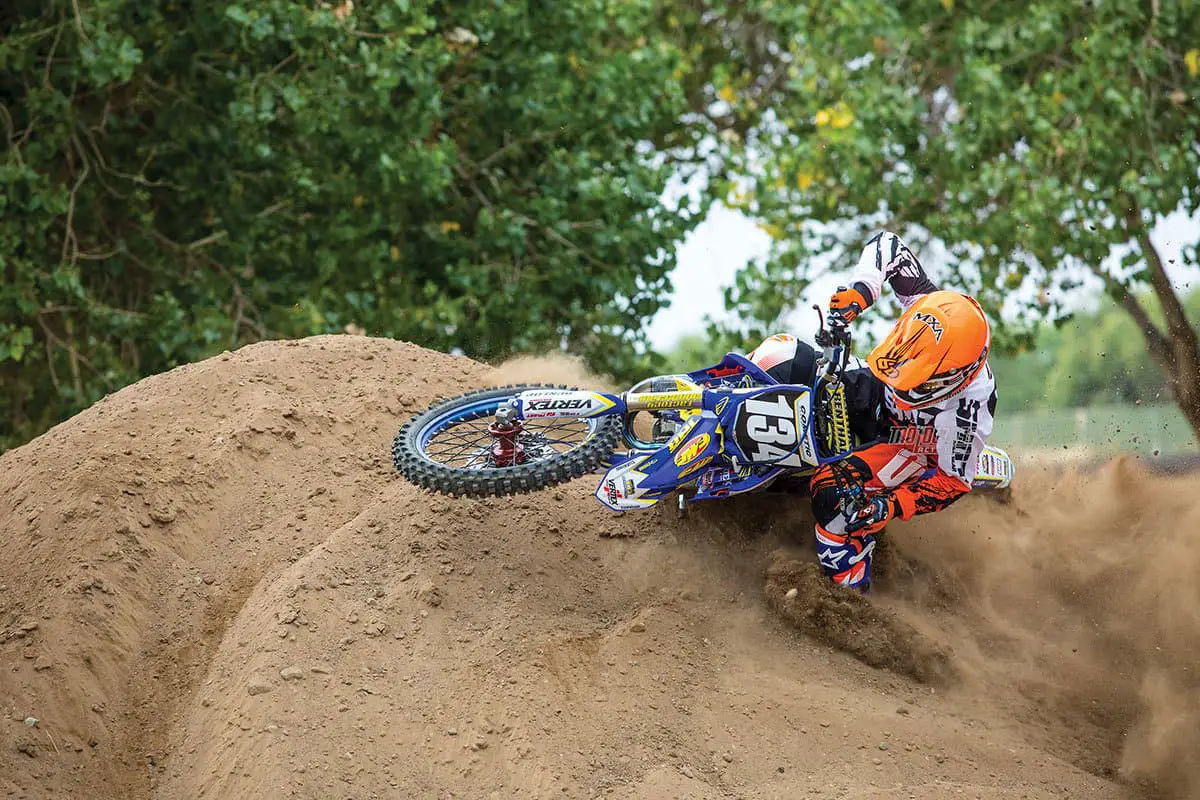 The powerband of the YZ134 felt like a 125 on steroids. It had more power across the entire spread, making for a playful bike that any smoker fan would love.
The powerband of the YZ134 felt like a 125 on steroids. It had more power across the entire spread, making for a playful bike that any smoker fan would love.
BEHIND THE CURTAIN OF THE YAMAHA YZ134
TMR took a different approach to building the YZ134 engine. It was built by keeping the same bore as a YZ125. How so? TMR extends the crank’s stroke to achieve the added cc. For those who like to bend the rules, view this as a stealth engine. To know that it was a big bore, you would have to take off the head and note that the piston is not flush with the cylinder. The crankcases were modified to increase the clearance for the stroked crankshaft. TMR also changed the cylinder port timing, combustion dome shape and used a modified Vertex piston.
On the track, test riders noticed that it took a little longer to get the engine into its sweet spot, but it was well worth the wait. The powerband felt like a 125 with more power across the spread. With the speed that MXA’s Pro riders carry, they don’t have much of a need for bottom-end power. The top end and over-rev are where the Pros live, and the YZ134 hit the spot. It pulled another 10 feet into the corners, allowing them to shift less and ride more fluidly. As we expected, MXA’s Vets and Novices did not see eye to eye with our Pro riders. After riding the YZ144, they had trouble getting into the meat of the YZ134’s powerband. They had to use the clutch more and shift down to get drive out of the corners. They didn’t like having to ride outside their comfort zone on the YZ134; however, on high-speed tracks, the faster Vets and Novices liked the increased top end and over-rev. They were more inclined to let the power climb and hang it out at peak power.
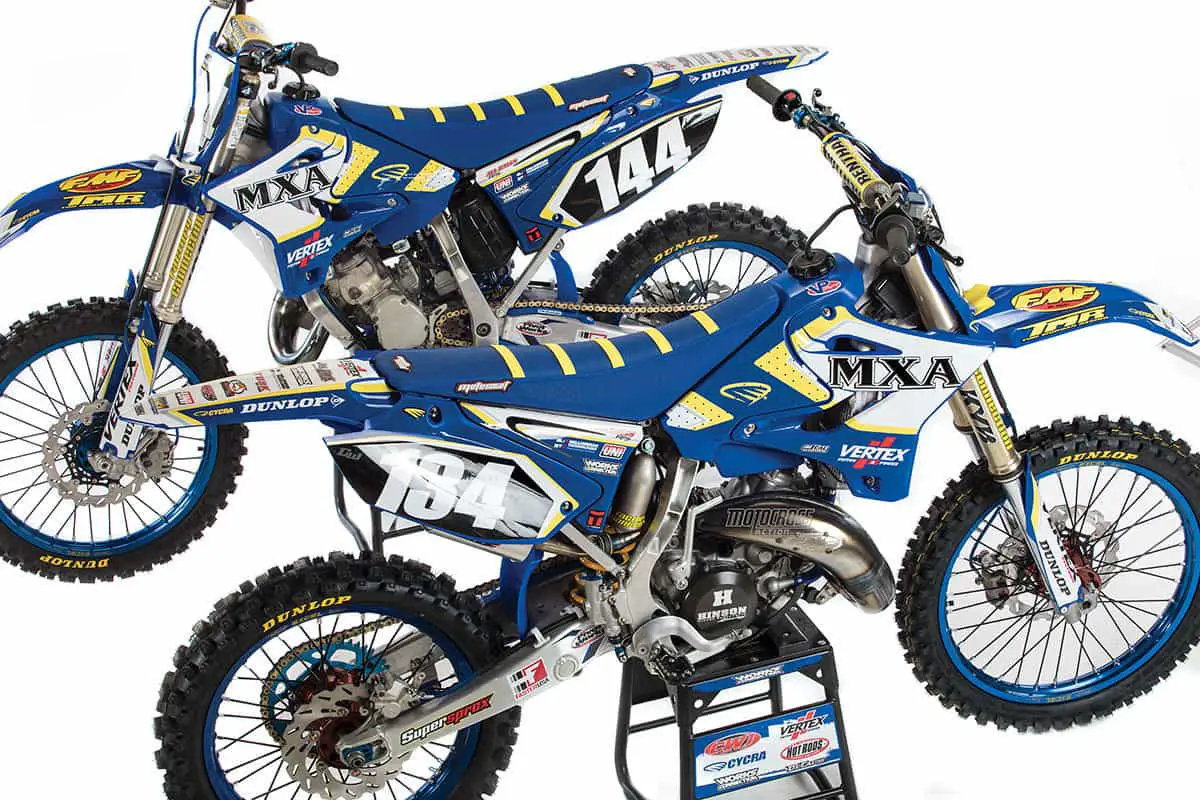 In the battle of the big-bore 125s, surprisingly more MXA test riders liked the smaller-displacement 134 over the 144.
In the battle of the big-bore 125s, surprisingly more MXA test riders liked the smaller-displacement 134 over the 144.
THE SHOWDOWN
Tests often end with the phrase, “There is no winner here.” Not true of this test, because in this showdown, there are two winners. All you gotta do is figure out which group you fall into. Each bike was incredibly specific to the skill level of the rider (and to a lesser extent the layout of the terrain). The YZ144 suited tight tracks, Vet and Novice riders and those who favor punch over-rev. On the other hand, the YZ134 catered to fast riders who were willing to let it all hang out in the upper fringes of the powerband—and willing to give up low-end punch.
Not surprisingly, even though we went to great lengths to make both bikes identical in the chassis layout, suspension and setup, they handled night-and-day differently. All riders (slow, fast, old and young) favored the YZ134’s handling. Why? The smoother, less abrupt, silkier and higher-rpm powerband didn’t upset the chassis in transitions. The riders could keep their weight over the rear and let it roll. With the YZ144, the harder-hitting power tended to upset the bike if you weren’t ready for it. Additionally, when the engine went flat on top, the bike suddenly felt heavy and sluggish (a trait that could only be reduced by short-shifting).
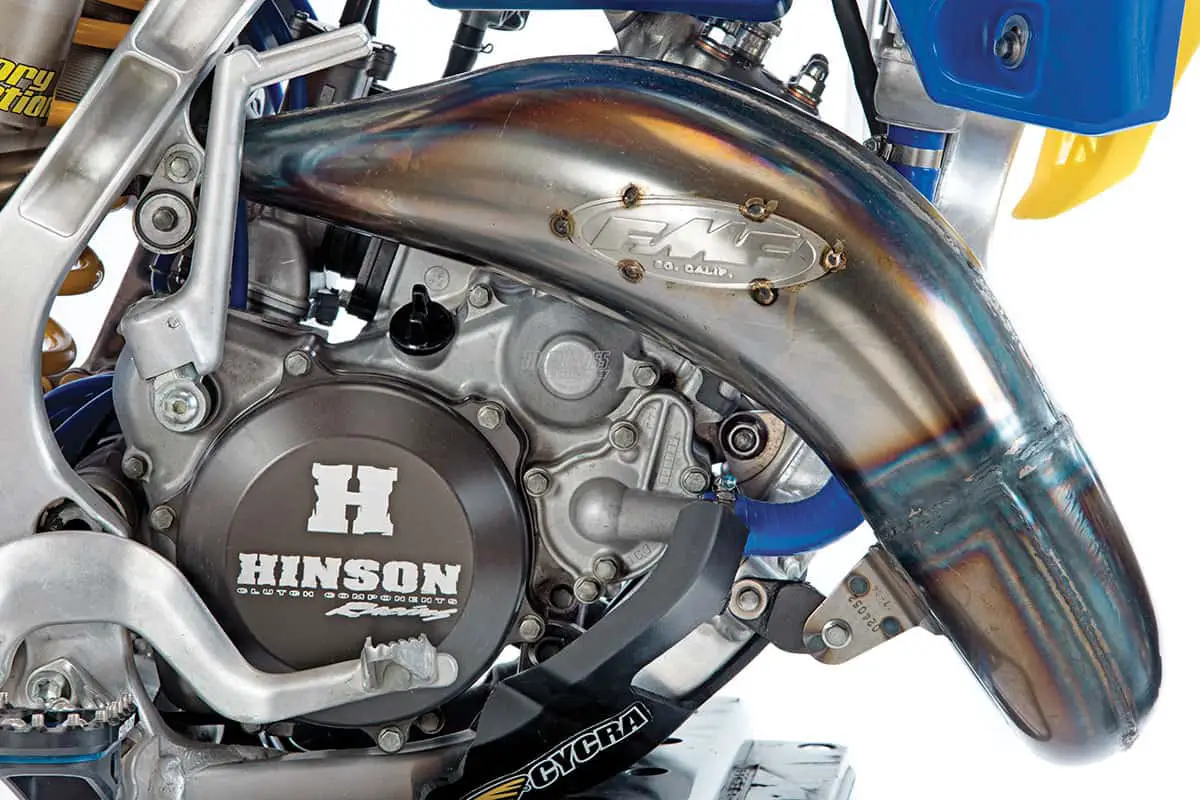 YZ144: An Athena 144cc cylinder was used with a Vertex piston on our build. Tom Morgan Racing massaged the cylinder, piston and crankcase to gain pony power.
YZ144: An Athena 144cc cylinder was used with a Vertex piston on our build. Tom Morgan Racing massaged the cylinder, piston and crankcase to gain pony power.
Factory Connection’s suspension setup was much better than the stock Kayaba SSS components. That is saying something. Both these bikes were faster than the KTM 125SX, but it was a different kind of fast.
It is important to note that we are talking about budget bike building. We started with used bikes; however, to keep this shootout down to its basics, you can put in a completely new bottom-end big-bore kit (either 135 or 144) and gaskets in these YZ125s for less than 500 bucks. Depending on how cheaply you can get a used YZ125, you could be on to something special for half the price of a new YZ125 or KTM 125SX.
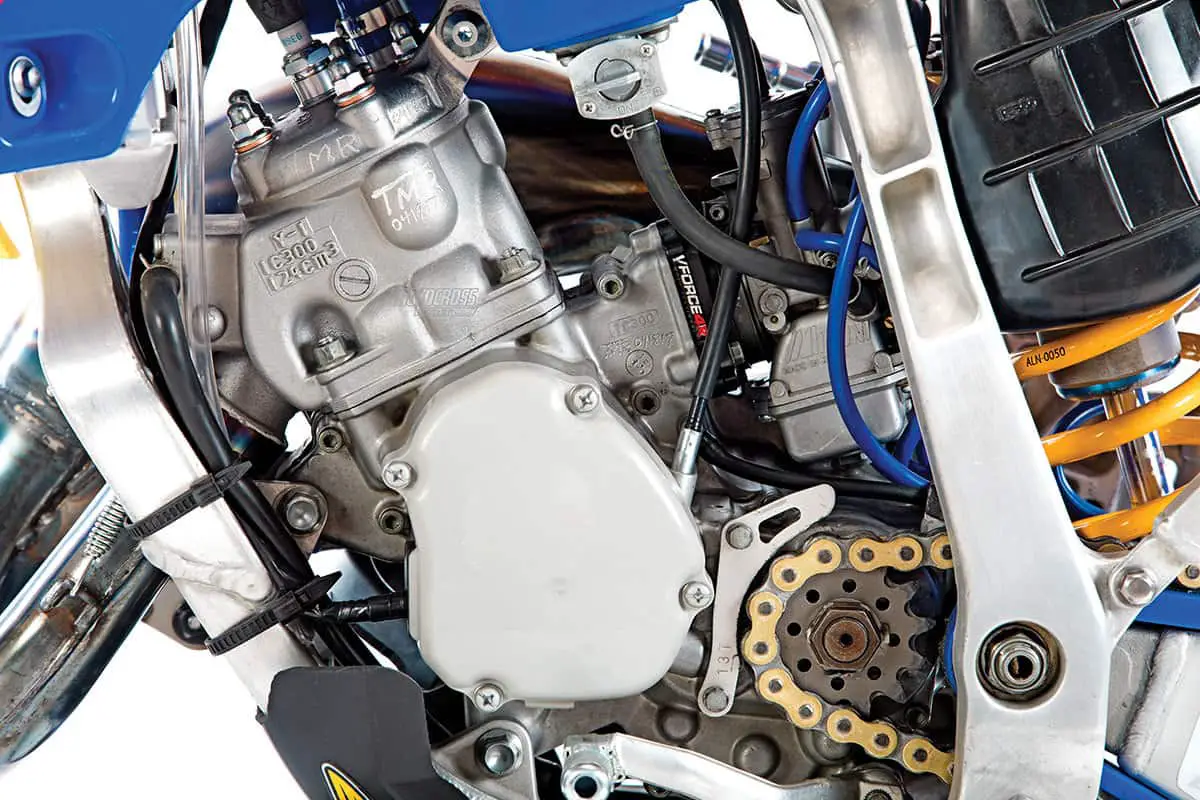 YZ134: The YZ134 engine is a “stealth engine.” You can’t tell it is a big bore engine externally, because it isn’t. The piston is a stock displacement, but the crank is stroked.
YZ134: The YZ134 engine is a “stealth engine.” You can’t tell it is a big bore engine externally, because it isn’t. The piston is a stock displacement, but the crank is stroked.
WHAT DID WE REALLY THINK?
We think we went overboard, but we did so to show you as many options as possible for your personal YZ125 project. We aren’t holding a gun to your head forcing you to go whole hog. We did this so you can navigate through what fits your budget and interests. Every rider is different. The more options we offer, the more riders we can help. Was the MXA YZ134-versus-YZ144 challenge a success? You bet. If you are a YZ125 rider, or want to be, these are two options that will get you on a new bike—new for you that is.
MX YZ134/144 SUPPLIER LIST
www.tommorganracing1.com
www.hotrodsproducts.com
www.vertexpistons.com
www.crankworks.com
www.mt-llc.com
www.cometic.com
www.supersproxusa.com
www.unifilter.com
www.hinsonracing.com
www.fmfracing.com
www.mototassinari.com
www.pivotworks.com
www.icwbikestands.com
www.allballsracing.com
www.renthal.com
www.dunlopmotorcycle.com
www.cv4.net
www.worksconnection.com
www.tuskoffroad.com
www.appliedrace.com
www.decalmx.com
www.cycraracing.com
www.tmdesignworks.com
www.motoseat.com
www.vpracingfuels.com
www.fasterusa.com
www.scar-racing.com
www.fasstco.com
www.motionpro.com
www.factoryconnection.com







Comments are closed.